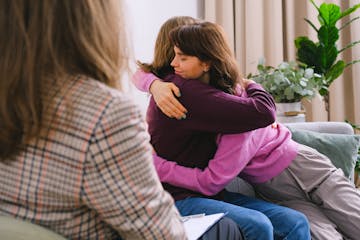Aesthetic violence is a term that describes the social and cultural pressure placed on people to meet certain standards of beauty. This pressure can manifest itself in various ways, such as discrimination based on physical appearance, advertising that promotes unattainable ideals of beauty, or comments and criticism related to people's appearance. Aesthetic violence not only affects people's self-esteem, but also has a destructive impact on society as a whole.
Origin and manifestations of violence aesthetic
Aesthetic violence has its roots in the social construction of beauty and in the cultural ideals that are imposed through the media, advertising and the entertainment industry. These ideals are usually based on unrealistic beauty standards that are unrepresentative of the diversity of body shapes and sizes that exist in reality. As a result, many people feel pressured to meet these standards, which can lead to insecurity, body dissatisfaction, and low self-esteem.
Manifestations of aesthetic violence:
1. Discrimination based on physical appearance: Discrimination based on physical appearance is a form of aesthetic violence that is manifested through prejudices and stereotypes based on people's appearance. This can lead to social exclusion, marginalization and lack of job opportunities for those who do not meet conventional beauty standards.
2. Advertising and the media: Advertising and the media play an important role in perpetuating unrealistic beauty ideals. Through the promotion of products, services and lifestyles associated with "perfect" beauty, constant pressure is created on people to conform to these standards, which can have a negative impact on their self-image and self-esteem.
3. Comments and criticism: Comments and criticism related to people's physical appearance can be a form of aesthetic violence, especially when they are destructive, hurtful or discriminatory. These comments can come from close people, strangers or even from oneself, through the negative internal dialogue that is established in relation to one's own appearance.
Effects of aesthetic violence on self-esteem
Aesthetic violence can have devastating effects on people's self-esteem, especially those who do not meet prevailing beauty standards. The pressure to conform to these standards can lead to feelings of inadequacy, shame, and discontent with one's body, which in turn can lead to mental health problems such as depression, anxiety, and eating disorders.
Consequences on self-esteem:
1. Insecurity and low self-esteem: People who experience aesthetic violence often develop insecurities in relation to their physical appearance, which negatively impacts their self-esteem and their perception of themselves. This insecurity can interfere with your emotional well-being and your ability to function safely in society.
2. Constant comparison: Constant exposure to unattainable beauty ideals can lead people to continually compare themselves to unrealistic models of perfection, which can lead to chronic dissatisfaction with their own appearance and a sense of personal failure. /p>
3. Excessive self-demand: The pressure to meet beauty standards can lead to excessive self-demand, in which people set unattainable goals for themselves in terms of their physical appearance. This can lead to behaviors that are harmful to health, such as dietary restriction, substance abuse or unnecessary plastic surgery.
Impact of aesthetic violence on society
In addition to the individual effects on self-esteem, aesthetic violence also has an impact on society as a whole, contributing to the perpetuation of discrimination, inequality and social exclusion. The promotion of unrealistic beauty ideals fuels the culture of the perfect body, which in turn reinforces gender, race and social class stereotypes that perpetuate the marginalization and discrimination of certain groups of the population.
Impact social:
1. Discrimination and exclusion: Valuing certain types of beauty above others can lead to discrimination and exclusion of people who do not meet those standards. This is reflected in areas such as the labor market, education and interpersonal relationships, where those who conform to the predominant beauty ideals are favored.
2. Stereotypes and prejudices: Unrealistic beauty ideals contribute to the creation of stereotypes and prejudices based on physical appearance. These stereotypes can influence the perception of certain population groups and the opportunities offered to them in society.
3. Impact on mental health: The pressure to meet beauty standards can have serious consequences on people's mental health, contributing to the development of disorders such as depression, anxiety and low self-esteem. These mental health problems can affect the quality of life and emotional well-being of the population as a whole.
Conclusions and final reflections
Aesthetic violence is a complex phenomenon that affects the self-esteem of people and society as a whole, by perpetuating unrealistic ideals of beauty that generate insecurities, comparisons and excessive self-demands. To combat this form of violence, it is essential to promote diversity and inclusion in the representation of beauty in the media, in advertising and in popular culture, as well as to promote critical and reflective education on the social construction of beauty. beauty.
It is necessary to recognize that beauty is not limited to a single standard and that the diversity of shapes, sizes and colors is what enriches the human experience. By valuing diversity and individuality in physical appearance, a more inclusive and respectful environment is promoted, where all people can feel safe and valued for who they are, beyond their appearance.


